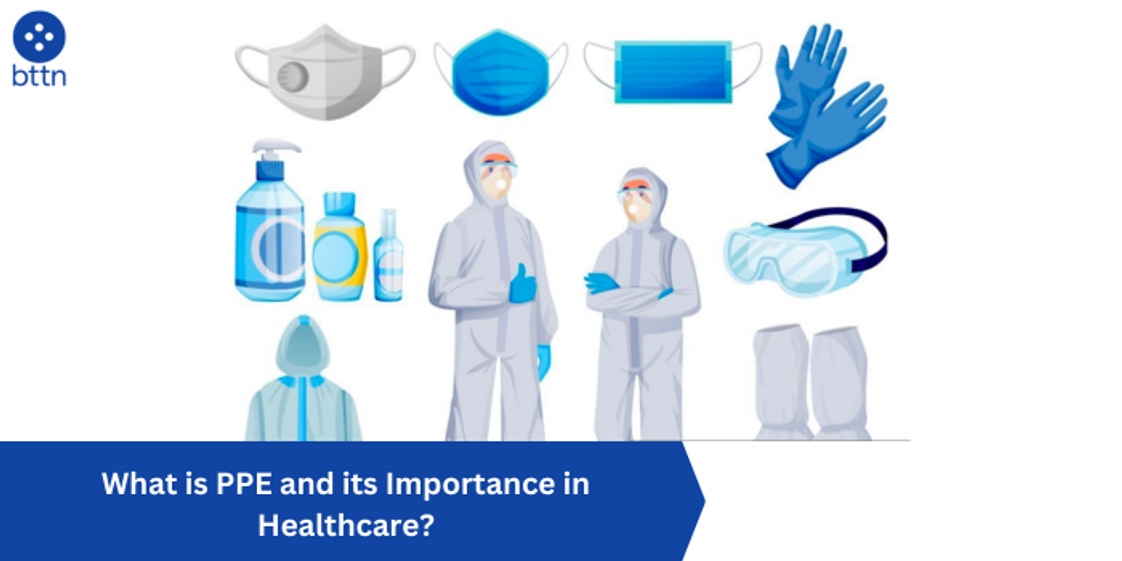
What is PPE and its Importance in Healthcare?
Posted by Pankaj Dhiman on Feb 21st 2024
In the ever-evolving world of healthcare, where the well-being of both patients and medical professionals is paramount, personal protective equipment (PPE) plays a vital role. It serves as a crucial line of defense, safeguarding individuals from a multitude of hazards encountered in healthcare settings. But what exactly is PPE, and why is it so important?
Understanding PPE:
PPE refers to specialized gear worn by healthcare workers to protect themselves from harmful biological agents, chemicals, radiation, and physical hazards. This equipment acts as a barrier, minimizing exposure to infectious diseases, toxic substances, and other potential threats. Common types of PPE in healthcare include:
- Gowns: Fluid-resistant garments that shield the wearer from bodily fluids and splashes.
- Gloves: Protect hands from contact with contaminated surfaces and infectious materials.
- Masks and respirators: Filter airborne particles and droplets, preventing inhalation of harmful pathogens.
- Face shields and goggles: Guard eyes and face from splashes and sprays.
- Footwear: Protects feet from punctures, spills, and contamination.
The Significance of PPE in Healthcare:
The importance of PPE in healthcare cannot be overstated. It safeguards both healthcare workers and patients in several ways:
- Reduces infectious disease transmission: By creating a physical barrier, PPE minimizes the spread of bacteria, viruses, and other pathogens between patients, healthcare workers, and the environment. This is particularly crucial in preventing hospital-acquired infections (HAIs), which can have severe consequences for patients.
- Protects against chemical hazards: Healthcare workers are often exposed to hazardous chemicals, such as disinfectants and chemotherapeutic agents. PPE, like gloves and gowns, helps prevent skin irritation, allergic reactions, and even chemical burns.
- Minimizes radiation exposure: In radiology departments and other settings involving radiation, PPE like lead aprons and eyewear shields healthcare workers from harmful radiation doses.
- Prevents physical injuries: Sharp instruments, needles, and broken glass are common hazards in healthcare settings. PPE, such as puncture-resistant gloves and sturdy footwear, helps prevent cuts, punctures, and other physical injuries.
Must Read: 10 Best-Selling Gauze Sponges in the US 2024
Choosing the Right PPE:
The selection of appropriate PPE depends on several factors, including:
- The specific task or procedure being performed.
- The potential hazards involved.
- The individual's risk factors and health status.
It's crucial for healthcare facilities to have a comprehensive PPE program that includes:
- Risk assessments to identify potential hazards.
- Selection of appropriate PPE based on the identified risks.
- Training on proper PPE use, donning, and doffing.
- Regular maintenance and replacement of PPE.
The use of PPE goes beyond simply wearing the equipment. Proper training and adherence to protocols are essential for its effectiveness. This includes:
- Hand hygiene: Washing hands before and after donning and doffing PPE is crucial for preventing cross-contamination.
- Correct donning and doffing: Following established procedures ensures the PPE provides optimal protection and minimizes the risk of self-contamination.
- Regular inspection and maintenance: Damaged or expired PPE should be replaced immediately to maintain its effectiveness.
Must Read: HALYARD Sequential Sterilization Wrap
The Future of PPE:
As technology advances, the landscape of PPE is constantly evolving. New materials and designs are being developed to offer enhanced protection, comfort, and reusability. Additionally, the integration of smart technology into PPE is being explored, allowing for real-time monitoring of wearers' exposure levels and providing valuable data for improving safety protocols.
In Conclusion:
PPE stands as a silent guardian in healthcare settings, safeguarding both caregivers and patients. By understanding its importance, choosing the right equipment, and adhering to proper protocols, we can create a safer and healthier environment for everyone involved in the healthcare system.

